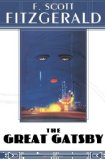It was required reading for all three of my daughters in high school. My oldest daughter still considers it one of her favorite novels. It escaped my attention (or I avoided its reach) for decades. I am an initiate now, though.
 “It” is The Great Gatsby. I’ve know it’s generally been required high school reading for years. But I also know it wasn’t at my high school. (In fact, all I truly remember reading is a Mark Twain novel but not whether it was Huck Finn or Tom Sawyer.) For whatever reason, though, the urge to read it struck me this week.
“It” is The Great Gatsby. I’ve know it’s generally been required high school reading for years. But I also know it wasn’t at my high school. (In fact, all I truly remember reading is a Mark Twain novel but not whether it was Huck Finn or Tom Sawyer.) For whatever reason, though, the urge to read it struck me this week.
I will admit I don’t know that I would call it the “great American novel” but it certainly qualifies as a quintessential one. Still, I enjoyed it and intend to seek out some other works by F. Scott Fitzgerald. I think it is an engaging look at 1920s America and actually still reflects a bit of the American psyche today — that with will and effort alone we can remake ourselves (although perhaps not always wholly with honesty), that social status is not the same as acceptance, and there is a great dichotomy between the rich and the man or woman on the street. In fact, the last may make Gatsby extremely topical. Economists say income inequality in the U.S. is the highest its been since the 1920s — before the Great Depression occurred.
What I was perhaps most impressed by Fitzgerald’s conciseness. Granted, there are a few sentences you have to stop and track through again, but Fitzgerald tells a lot of story with brevity, less than 200 pages. I probably shouldn’t have waited so long to read it but perhaps the fact I found it enjoyable and relevant further establishes the reason for its popular longevity.
No amount of fire or freshness can challenge what a man will store up in his ghostly heart.
F. Scott Fitzgerald, The Great Gatsby







